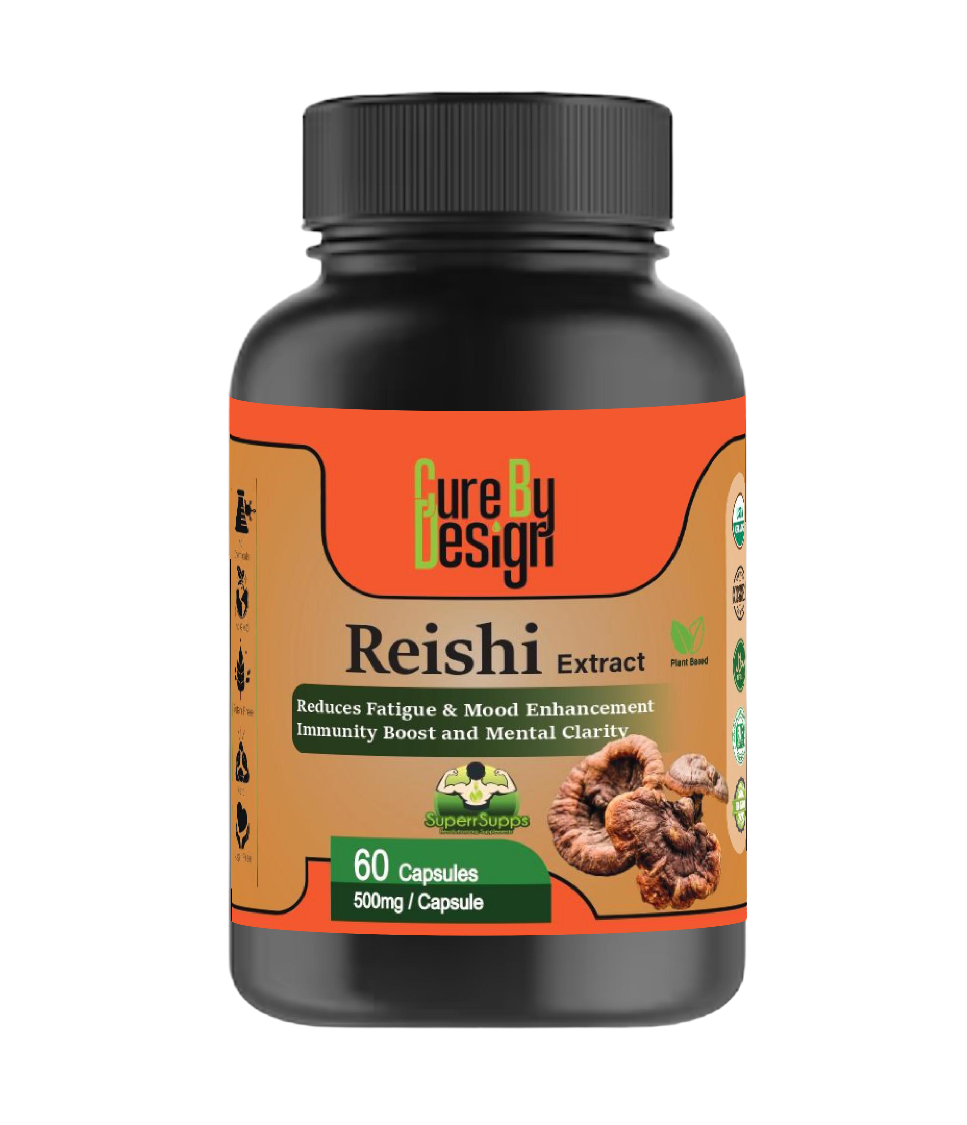Choosing Between Sativa and Indica for Pain Relief: What You Need to Know

Table of Contents
- Understanding Sativa and Indica Beyond Appearance
- Why Cannabinoid and Terpenoid Profiles Matter
- How Indica Strains Help with Musculoskeletal Pain
- Sativa Strains and Their Role in Neuropathic Pain
- Balancing Effects with Hybrid Cannabis Strains
- Common Side Effects and Safety Tips
- Patient Preferences in Pain Management
- Evidence on Effectiveness for Pain Relief
- Choosing Cannabis Based on Chemical Profiles
- Dosing Guidelines and Monitoring Effects
- Consulting Healthcare Providers Before Use
- Frequently Asked Questions
When deciding between sativa and indica for pain relief, it’s important to look beyond the traditional labels, which mostly describe plant shape rather than effects. The key differences come from their chemical makeup, cannabinoids and terpenoids, that influence how they work. Indica strains tend to have more myrcene, creating relaxing, sedative effects useful for full-body and musculoskeletal pain, making them better suited for nighttime use. Sativas usually contain uplifting terpenes like limonene with higher THC levels that might help with neuropathic pain during the day but can cause anxiety in some users. Always check cannabinoid profiles carefully and start with low doses while consulting healthcare providers to manage side effects safely.
Understanding Sativa and Indica Beyond Appearance

The traditional way people distinguish Sativa from Indica has mostly relied on physical traits like plant height and leaf shape. However, these visual differences don’t reliably indicate how the plant will affect pain relief or its chemical makeup. The true distinction lies in the complex profiles of cannabinoids and terpenoids each strain contains. For example, both Sativa and Indica varieties can have varying levels of THC and CBD, which are the primary compounds influencing pain and inflammation. Terpenoids, which give cannabis its aroma, also play a crucial role. Indica strains often have higher amounts of myrcene, a terpene known for its sedative and relaxing effects, which can help with muscle tension and promote sleep. On the other hand, Sativa strains tend to feature terpenes like limonene, which may uplift mood and provide an energizing feeling. These compounds work together in what’s called the entourage effect, creating the overall experience and therapeutic benefit. In today’s cannabis market, breeding practices have blurred the lines between Sativa and Indica, making it less useful to rely on these labels alone. Instead, understanding the biochemical profile of a product is a more practical way to choose cannabis for pain relief.
Why Cannabinoid and Terpenoid Profiles Matter
When choosing cannabis for pain relief, looking beyond the simple Sativa or Indica label is crucial. The real difference lies in the chemical makeup, especially cannabinoids like THC and CBD, and terpenes such as myrcene, limonene, and alpha-pinene. THC is the main psychoactive compound and tends to offer stronger pain relief, but higher levels can also bring about side effects like anxiety or memory issues. CBD, on the other hand, is non-intoxicating and has anti-inflammatory and analgesic properties, though it may not provide immediate relief when used alone. Terpenes play a key role too: myrcene, often found in Indica strains, promotes sedation and muscle relaxation, which can be helpful for nighttime pain management. Limonene, common in Sativa strains, uplifts mood and can help combat depression linked to chronic pain. Alpha-pinene may counteract some memory problems caused by THC and improve alertness, which can be useful during the day. Because of this complex interaction, having accurate lab testing for both cannabinoid and terpene content is essential. Products labeled merely as Sativa or Indica offer limited guidance since their biochemical profiles can vary widely. Understanding these profiles helps patients and clinicians select strains that match specific pain types and personal needs, improving both physical comfort and emotional well-being.
How Indica Strains Help with Musculoskeletal Pain

Indica strains are often chosen for musculoskeletal pain because they promote deep, full-body relaxation that helps ease conditions like arthritis or fibromyalgia. Their higher myrcene content acts as a natural muscle relaxant and sedative, which reduces tension and discomfort in affected areas. Beyond muscle relief, indica strains tend to improve sleep quality, an important factor for pain recovery and tolerance. Many indica varieties offer a balanced mix of THC and CBD, providing effective pain relief while lowering the risk of anxiety that can come with higher THC alone. The calming effects of indica also help diminish the perception of pain and reduce stress that often accompanies chronic pain conditions. Patients commonly report fewer problems related to cannabis use when relying on indica for long-term pain management. Due to their sedative nature, indica strains are generally recommended for evening or nighttime use, with typical doses ranging from 5 to 20 mg per session. It’s important to monitor for sedation or impaired alertness, especially when starting or adjusting dosage. For those needing both pain relief and better sleep without excessive stimulation, indica strains offer a practical option. Additionally, their anti-inflammatory properties contribute to lowering ongoing inflammation often linked with chronic musculoskeletal pain, making them a well-rounded choice for patients seeking relief in both body and mind.
| Feature | Indica Strains |
|---|---|
| Pain Type | Musculoskeletal pain (arthritis, fibromyalgia, chronic back pain) |
| Effect | Full-body relaxation, muscle relaxation, sedation |
| Key Terpene | Myrcene (sedative, analgesic) |
| THC/CBD Balance | Balanced THC and CBD supporting analgesia with less anxiety |
| Sleep | Improves sleep quality, aids recovery and pain tolerance |
| Use Time | Evening or nighttime use recommended |
| Dose Range | 5 to 20 mg per session |
| Side Effects | Possible sedation or impaired alertness |
| Pain Relief Mechanism | Reduces discomfort, muscle tension, and pain perception |
| Patient Feedback | Fewer cannabis-related problems reported |
Sativa Strains and Their Role in Neuropathic Pain

Sativa strains are known for their uplifting, cerebral, and energizing effects, which can be particularly helpful for managing neuropathic pain, headaches, and migraines. Their higher THC content often contributes to pain relief by interacting with the body’s pain receptors, while terpenes like limonene may support mood elevation and reduce anxiety for some users. Because of their stimulating properties, sativas are generally better suited for daytime use, helping to improve focus and motivation that chronic pain can sometimes diminish. However, these benefits come with potential side effects such as increased anxiety, paranoia, or a faster heart rate, especially when taken in larger doses. Starting with a low dose, typically 5 to 10 mg per day, and gradually adjusting can help minimize these risks. Sativa strains usually have lower CBD levels compared to indicas, which means they might offer less anti-inflammatory relief but tend to enhance alertness. People prone to anxiety or with heart conditions should avoid sativas without medical advice. For balanced effects, some users combine sativa with indica or hybrid strains to enjoy both energizing and relaxing benefits.
Balancing Effects with Hybrid Cannabis Strains
Hybrid cannabis strains combine genetics from both Indica and Sativa plants, offering a mix of effects that can be tailored for flexible pain management. Their chemical profiles vary significantly depending on which cannabinoids and terpenes dominate, making it important to look beyond the label. Some hybrids lean toward Indica-like sedation, helpful for evening pain relief and improving sleep, while others emphasize Sativa traits, providing uplifting, energizing effects suited for daytime use and neuropathic pain. This blend can moderate side effects commonly seen with pure Indica or Sativa strains by balancing THC and CBD levels, potentially reducing anxiety or excessive sedation. For patients needing a balance between activity and relaxation, hybrids offer a middle ground, but dosing requires careful titration due to their variable effects. Consulting lab-tested cannabinoid and terpene profiles is essential to predict how a specific hybrid might work for individual pain needs, ensuring a more personalized and effective approach.
Common Side Effects and Safety Tips

Cannabis use often comes with side effects like dry mouth, dizziness, and short-term memory issues. Sativa strains, which tend to be more uplifting, may increase anxiety or paranoia, particularly at higher doses or for those sensitive to these effects. On the other hand, indica strains are known for their sedative qualities, which can lead to excessive sleepiness or reduced coordination, so caution is needed if alertness is required. While serious adverse events are uncommon with responsible use, some people might experience rapid heartbeat or allergic reactions. It’s important to remember cannabis can interact with medications such as blood thinners, sedatives, or antidepressants, so consulting a healthcare provider before starting or adjusting cannabis treatment is essential. Starting with low doses and gradually increasing allows you to monitor tolerance and side effects safely. Avoid driving or operating heavy machinery when under the influence to prevent accidents. Using products from reputable sources with clear lab testing for cannabinoids and terpenes helps ensure safety and consistency. Finally, consider personal factors like mental health history and sensitivity to cannabis, as these can influence how you respond to different strains and dosages.
- Dry mouth, dizziness, and impaired short-term memory are common side effects of cannabis use.
- Sativa strains may increase anxiety or paranoia, especially at high doses or in sensitive individuals.
- Indica strains can cause excessive sedation or lethargy, affecting alertness and coordination.
- Serious adverse events are rare with responsible use but can include rapid heartbeat or allergic reactions.
- Cannabis can interact with medications such as blood thinners, sedatives, or antidepressants.
- Always consult healthcare providers before starting or changing cannabis treatment.
- Start with low doses and increase gradually to monitor tolerance and side effects.
- Avoid driving or operating heavy machinery when under the influence of cannabis.
- Use products from reputable sources with clear cannabinoid and terpene testing.
- Be aware of personal sensitivity and history of mental health conditions affecting cannabis response.
Patient Preferences in Pain Management
Many chronic pain patients tend to prefer Indica strains due to their calming and sleep-promoting effects. Users often report fewer cannabis-related issues with Indica compared to Sativa or hybrid strains, which may relate to Indica’s generally sedative properties that help with relaxation and pain at night. Patients motivated by pain relief typically develop safer and more consistent cannabis use habits, and their use does not necessarily involve larger amounts or more adverse effects solely because of their pain condition. For those managing pain during the day, Sativa or hybrid strains are sometimes favored to maintain alertness, functionality, and a better mood while still addressing symptoms. Patients value strains that offer effective symptom relief without causing overwhelming side effects, and many learn through personal experience and trial-and-error which strains and doses work best for them. Education on the chemical makeup of cannabis products, including cannabinoids and terpenes, helps patients make more informed choices, improving satisfaction and outcomes. Social and cultural views also shape preferences, as some may associate Indica with relaxation and Sativa with energy, influencing their selections. Ongoing feedback from patients plays a key role in guiding clinical advice and the development of products designed to meet diverse pain management needs.
Evidence on Effectiveness for Pain Relief
Real-world patient data suggests that Indica strains, particularly those with higher THC levels, tend to offer more significant relief for pain and insomnia compared to Sativa varieties. This is especially true for musculoskeletal pain conditions like arthritis or chronic back pain. On the other hand, CBD by itself may not provide immediate pain relief but plays a valuable role in reducing inflammation over time, which can support long-term management. When it comes to delivery methods, dried flower cannabis often works faster for symptom relief than concentrates or edibles, which might take longer to take effect. Although controlled clinical trials are still limited due to legal and regulatory barriers, observational studies indicate that focusing on chemical profiles, such as cannabinoid and terpene content, is more useful than relying on the traditional Sativa versus Indica labels. Evidence points to Indica strains being more effective for full-body or musculoskeletal pain, while Sativa strains might be better suited for neuropathic pain and mood elevation. Hybrids can offer a flexible approach but need further research to clarify their benefits. Patient-reported outcomes remain important alongside clinical data, helping guide personalized choices. Ultimately, balancing safety and effectiveness is key in real-world use, and more research is needed to identify the best combinations of cannabinoids and terpenes for pain relief.
Choosing Cannabis Based on Chemical Profiles
When selecting cannabis for pain relief, focusing on the chemical makeup, specifically cannabinoid and terpene profiles, offers a clearer path than relying on the traditional Indica or Sativa labels alone. THC and CBD ratios play a crucial role: higher THC levels often provide stronger pain relief, especially for daytime use, while increased CBD contributes anti-inflammatory benefits and may enhance relaxation without intoxication. Terpenes add another layer of effect; for example, myrcene, commonly found in Indica strains, promotes sedation and muscle relaxation, making it better suited for nighttime pain and sleep support. On the other hand, terpenes like limonene, typical in Sativa strains, tend to uplift mood and provide energizing effects, which can help manage pain during the day. Hybrid strains vary widely, so it’s important to examine their dominant cannabinoids and terpene balance to match your symptom needs. Because strain names often don’t reflect the true chemical content accurately, relying on lab-tested products with transparent cannabinoid and terpene profiles is essential. Consulting healthcare professionals experienced in medical cannabis can guide you in interpreting these profiles and tailoring your choices. Keep track of how different products affect your pain and any side effects to fine-tune your selections and dosing. Ultimately, chemical profiles offer a practical guide to finding the right cannabis product, rather than depending solely on whether it’s labeled Indica or Sativa.
Dosing Guidelines and Monitoring Effects
Starting with a low dose of THC, usually between 5 to 10 mg, is important, especially for new users or those who have a sensitive response to cannabis. Gradually increasing the dose helps find the right balance between pain relief and avoiding unwanted side effects such as dizziness or sedation. It’s useful to time doses based on your goals: sativa-dominant strains may be better for daytime use when you want to stay alert, while indica strains often work best at night due to their relaxing effects. Keeping a consistent dosing schedule allows you to track how well the cannabis is working and notice any patterns in side effects. Maintaining a diary of symptoms and side effects can guide dose adjustments and strain choices over time. Be cautious about mixing cannabis with alcohol or other sedatives unless advised by a healthcare provider, as this can increase risks. Elderly patients or those with complex medical conditions should start even more cautiously and consult their doctors regularly to review treatment safety and effectiveness. Since indica, sativa, and hybrid products can have different potencies and effects, adjusting your dose when switching between them is necessary. Educating yourself about dosing reduces risks and improves your chances of finding a regimen that offers meaningful pain relief without excessive side effects.
Consulting Healthcare Providers Before Use
Before using cannabis for pain relief, it’s important to have an open conversation with your healthcare provider. Be ready to share your full medical history, including any chronic conditions and medications you’re currently taking. This helps your provider assess potential drug interactions, especially if you use blood thinners, sedatives, or other prescriptions that might not mix well with cannabis. Clearly explain the type and severity of your pain, so they can recommend the best strains, considering cannabinoid and terpene profiles that suit your needs. For example, they might suggest indica strains with higher myrcene for muscle pain or sativa strains with uplifting terpenes for neuropathic discomfort. Ask about starting dosages and how to gradually adjust them to avoid side effects like sedation or anxiety. It’s also wise to clarify the legal requirements in your area, including any documentation needed to use medical cannabis legally. Your provider can guide you on how to monitor your response to treatment and spot any adverse reactions early on. If you have underlying issues like anxiety, heart conditions, or other mental health concerns, check for possible contraindications. Discussing alternative or complementary pain management strategies ensures a comprehensive approach to your care. Maintaining ongoing communication with your healthcare provider is key to safely adjusting your regimen and maximizing benefits.
Frequently Asked Questions
1. How do Sativa and Indica strains differ in the way they relieve pain?
Sativa strains tend to provide more energizing and cerebral effects, which may help distract from pain, while Indica strains often offer relaxing and sedating effects that can soothe muscle tension and promote deeper physical relief.
2. Can mixing Sativa and Indica strains give better pain relief than using just one type?
Yes, combining Sativa and Indica, also called a hybrid, can help balance the uplifting effects of Sativa with the calming effects of Indica, potentially offering more comprehensive pain management tailored to your needs.
3. Are there specific types of pain that respond better to either Sativa or Indica?
Generally, Indica may be more effective for chronic pain, inflammation, and muscle spasms due to its calming properties, while Sativa might help with pain influenced by mood or energy levels, like fibromyalgia or migraines, by improving focus and mood.
4. How do cannabinoids and terpenes in Sativa and Indica affect pain relief?
Both Sativa and Indica contain cannabinoids like THC and CBD, which interact with the body’s pain receptors, but their terpene profiles differ. Terpenes can influence how each strain makes you feel, with some promoting pain relief, relaxation, or mental clarity.
5. Is it better to use Sativa or Indica at different times of the day for pain relief?
Usually, people use Sativa during the day because of its alertness-boosting effects, which can help with pain without causing drowsiness, and Indica at night for its relaxing qualities, helping ease pain and improve sleep.
TL;DR Choosing between sativa and indica for pain relief should focus on their chemical makeup rather than traditional labels. Indica strains, often higher in myrcene and CBD, tend to help more with musculoskeletal pain and improve sleep, making them suitable for nighttime use. Sativa strains, with uplifting terpenes like limonene and higher THC, may ease neuropathic pain and boost mood, better for daytime use. Hybrid strains offer mixed effects. Start with low doses, watch for side effects like sedation or anxiety, and always consult a healthcare provider before use. Understanding cannabinoid and terpenoid profiles is key to finding the right strain for effective and safe pain management.














































